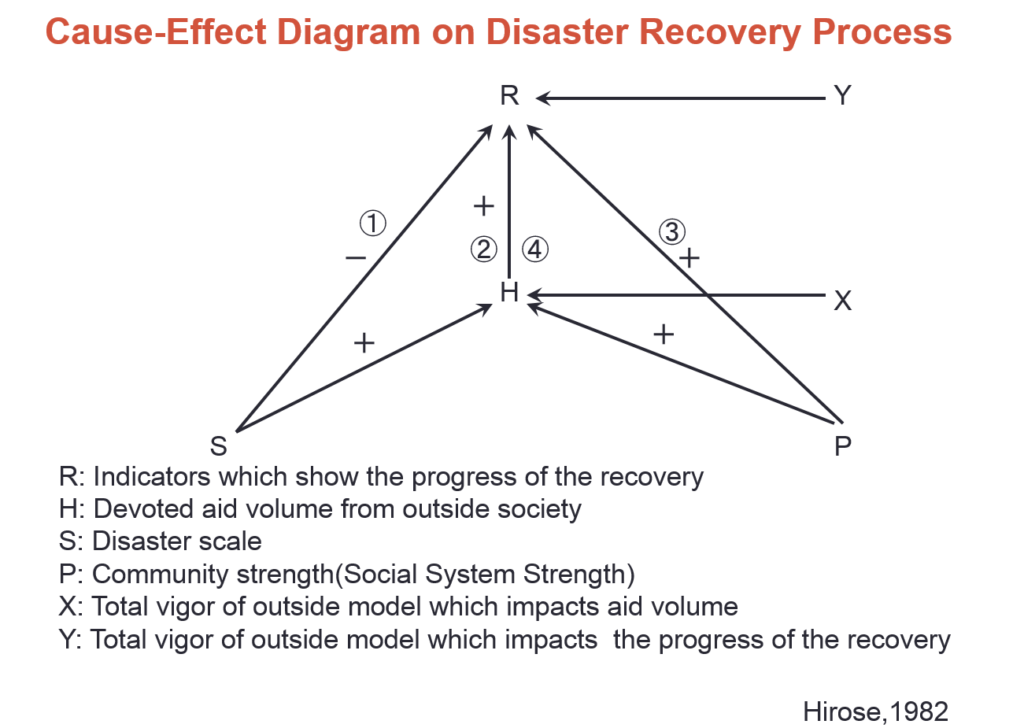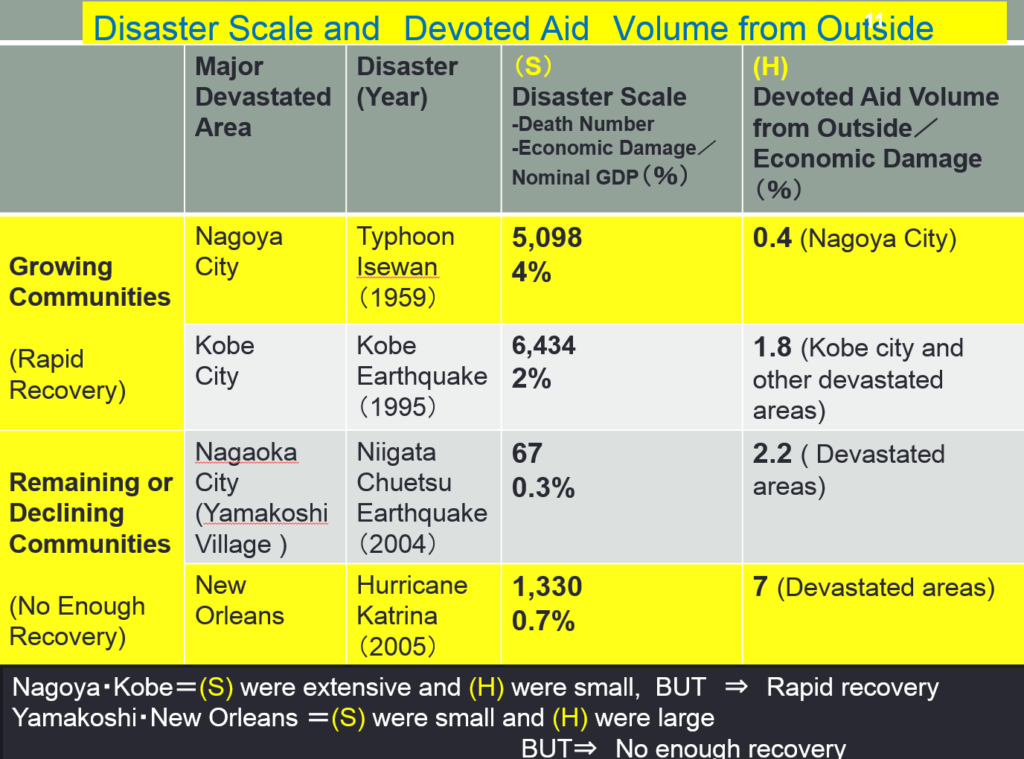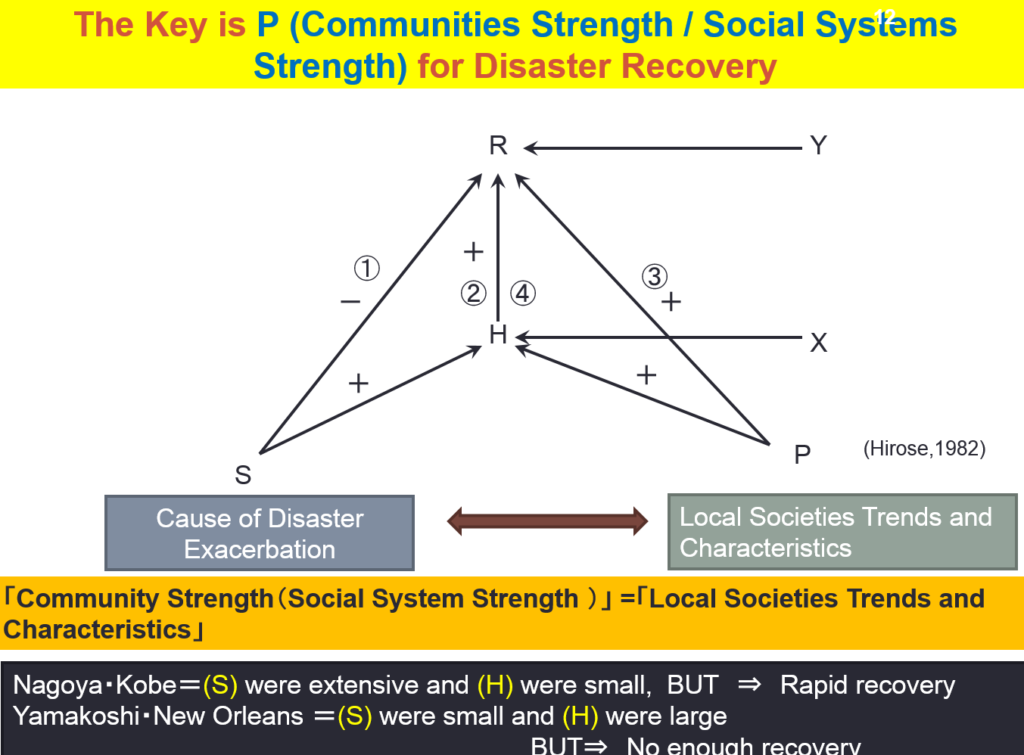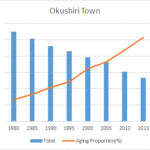The followings are the two disaster recovery theories used for this study.
1) Theoretical framework 1
Disasters contribute to change, they do so primarily by accelerating trends that are already under way prior to impact <Bates et al.(1963);Bates(1982);Bates and Peacock (1993)><Haas et al.(1977)>
2) Theoretical framework 2
Disaster Recovery Process is influenced by
① Devoted aid volume from outside society
② Disaster scale
③ Community strength (Social System Strength) <Hirose (1982) >
The first theory was already explained.
Concerning the second theory, the following Figure 4 can be referred.

Figure 4 Disaster Recovery
The disaster recovery progress is influenced by the following three indicators: S, Disaster scale, H, devoted an aid volume from outside society, and P, community strength(social system strength). For example, the large scale disaster has a high S which makes the recovery progress slow (Figure 2 indicates ①minus).
Table 1 Four Cases

The above Table 1 explains four disaster cases. Two growing communities before the disaster such as Nagoya city destroyed by Typhoon Isewan and Kobe city hit by Kobe earthquake.The other two were declining communities such as Nagaoka city (Yamakoshi village) affected by the Niigata Chuetsu earthquake and New Orleans devastated by Hurricane Katrina.
sponsored link
As you can see the above Table 1, Nagoya and Kobe have recovered rapidly after the disaster even if they had extensive Ss (disaster scales) with small Hs (help, aid from outside).
On the contrary, Yamakoshi and New Orleans have not recovered well after the disaster even if they had small Ss with large Hs.

Figure 5 Community Strength (Social System Strength)
Therefore, we can recognize the P(Community Strength) is the key indicator to influence the progress of the disaster recovery as shown in Figure 5.
These are presented at ICFM5 (The 5 th International Conference on Flood Management)





